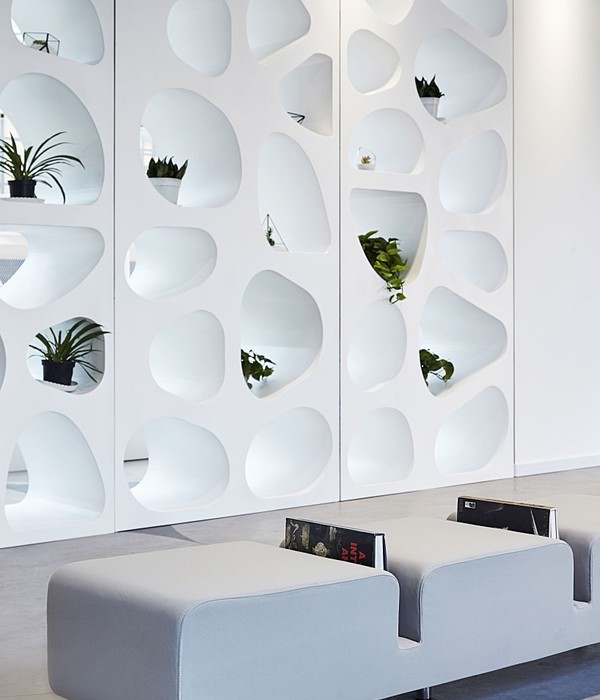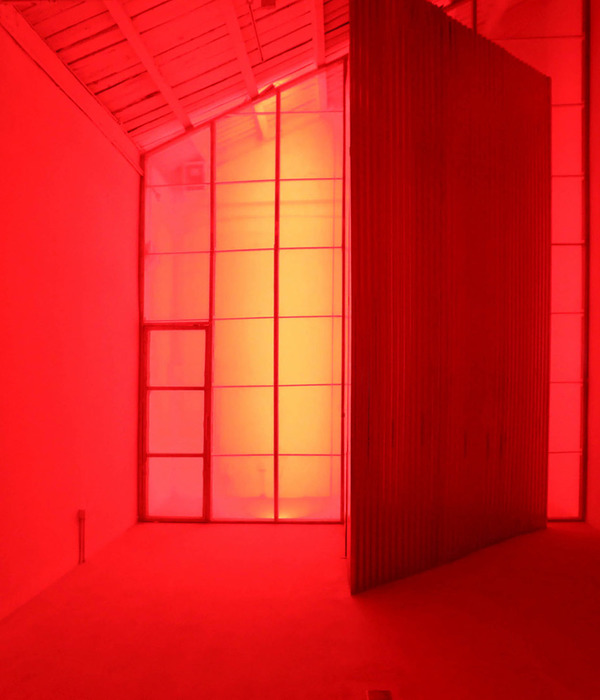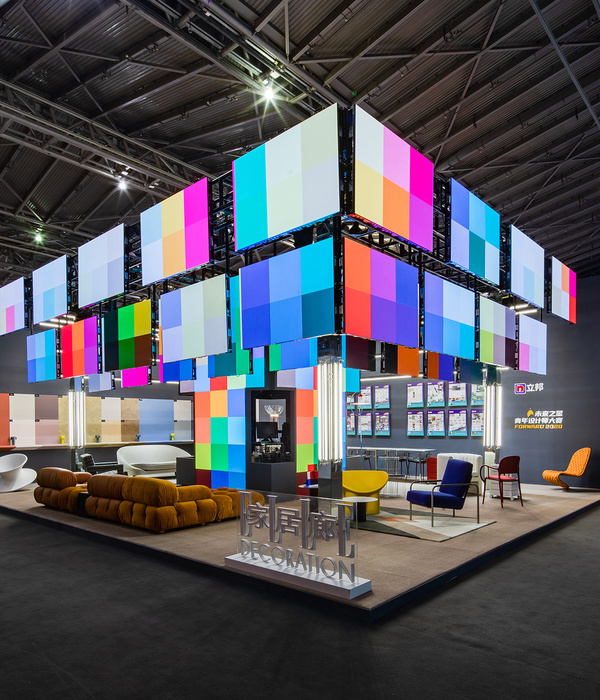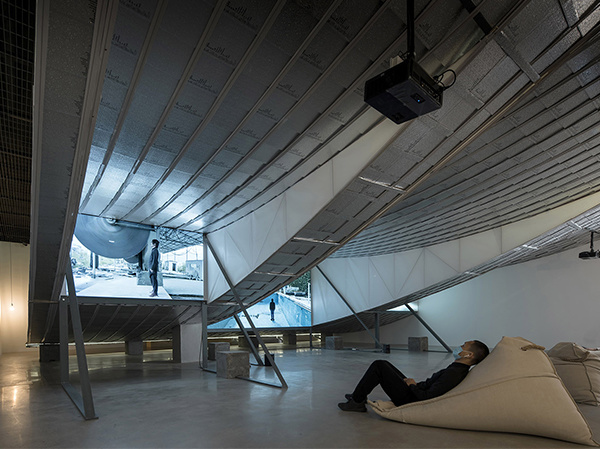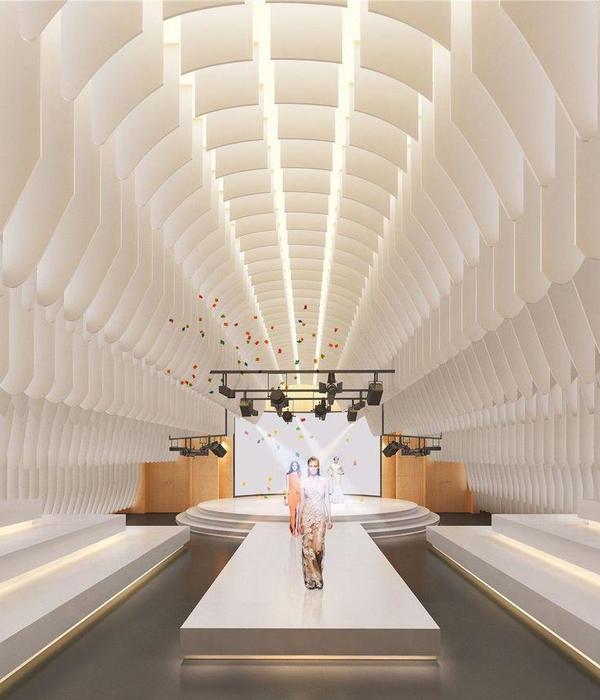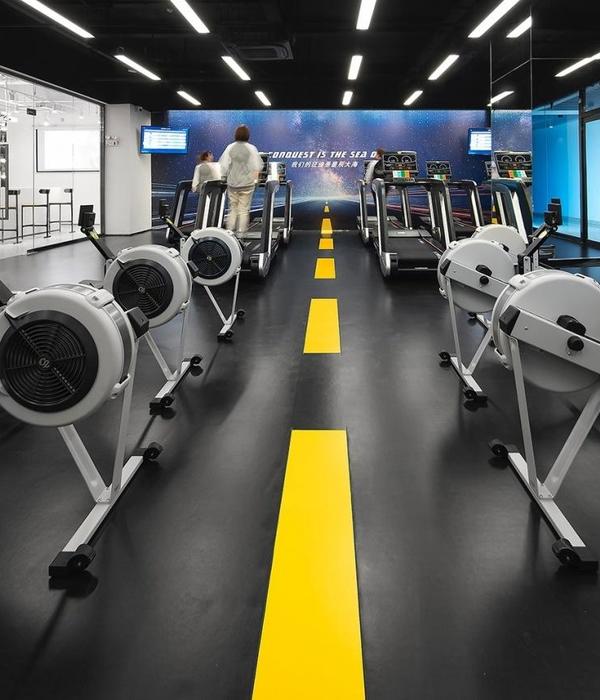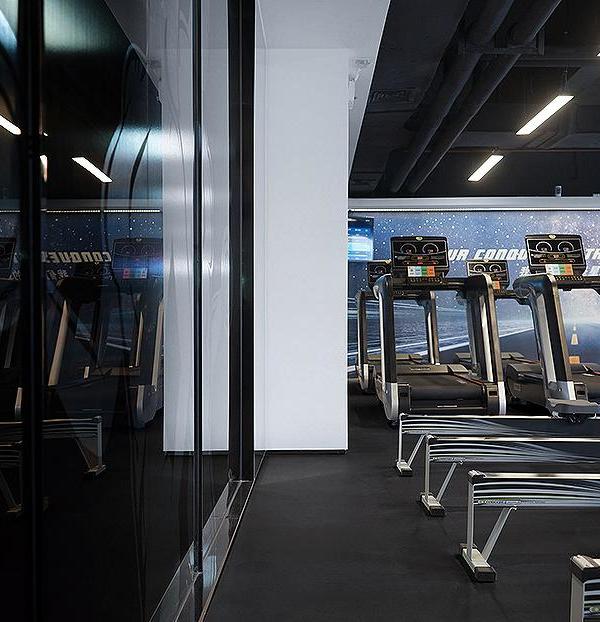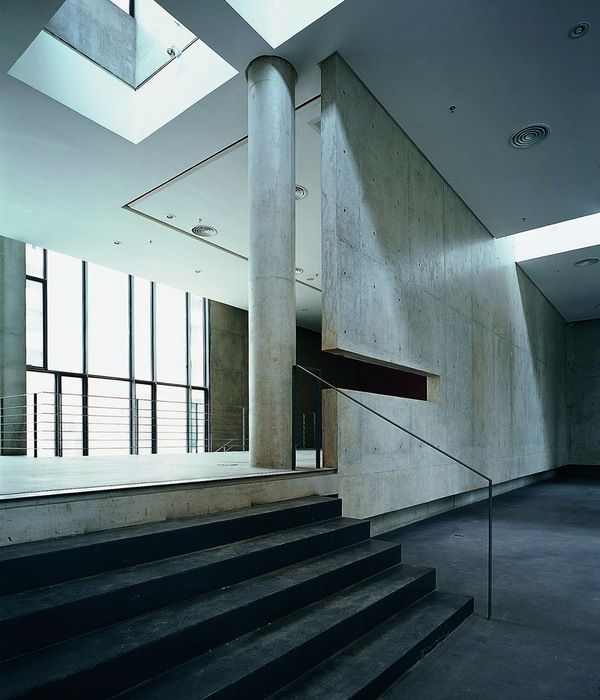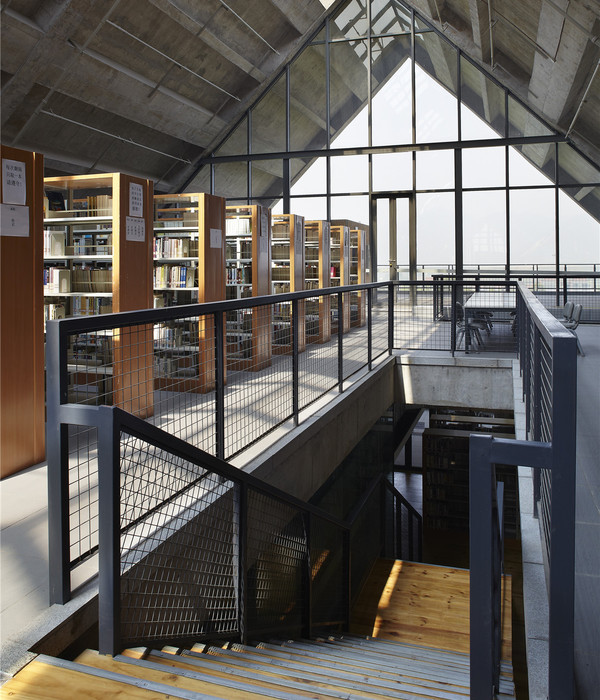非常感谢
Radionica Arhitekture
Appreciation towards
Radionica Arhitekture
for providing the following description:
Vucedol 文化博物馆位于克罗地亚的边境城市武科瓦尔,这里曾在1991年发生了残酷的战争,当时敌军将该城摧毁,屠杀开始后连医院这样的地方都未放过。克罗地亚独立后重建了武科瓦尔。Vucedol 文化博物馆地址选在一个高差达到20米的坡地上,与地形相契合,面向对面的多瑙河。所有的功能排布呈阶梯状,成为一条路径联系坡底与坡上的考古遗址平台。人们在穿行中了解Vucedol 文明,最终到达考古遗址平台。游人也选择通过融入景观的蜿蜒绿色屋顶直接到达考古遗址平台。
The museum building is a path which the visitors climb to overcome the elevation difference of some twenty meters, from the access road to the plateau on which the Vučedol culture archaeological findings have been discovered. Passing through the museum visitors get all the necessary information about the Vučedol culture, and come to the place of the archaeological sondages aware of importance and meaning of that place. Exhibition areas of the museum are a series of terraces that climb slowly adapting to the topography.
Openings to the northwest are orientated towards the Danube River. Instead of reaching the archaeology plateau through the museum one can also use the museum’s serpentine green roof.
位于多瑙河畔的Vucedol 文明与美索不达米亚的苏美尔、古埃及以及特洛伊文明几乎同时在公元前3000-2400年延生,经过发展最终扩散至克罗地亚以及欧洲中部和东部的11个国家。场地原来的拥有者是treim家族,他们历经沧桑的房屋仍然耸立在考古公园中。Gradac原来是一个锻造中心,因为锻造过程会释放出来赌气,因此Gradac和村庄分开建设,并承担卫城与宗教中心的功能。为此场地中遍布着储藏室和圆形的坟墓。当地建筑特征为:房子有圆角,墙壁是柳条粘土墙,中心有壁炉。考古的挖掘开始于1984年,停于90年代的战争,随后清除场地上的地雷,终于重新在2000年后开始。覆盖着树林与葡萄园的古迹面积为6英亩,用地高差20米,主要建筑有项目所介绍的博物馆、treim家族的住宅(用作考古研究中心)、古代手工艺坊、一座地下建筑和一座地面重建建筑。
Vucedol is located on the right bank of the Danube River , 4.5 km downstream from the center of Vukovar. Culture that bears its name , the Vučedol culture ( 3000- 2400.g.pr.Kr .) , is contemporary with Sumerian period in Mesopotamia , the Old Kingdom in Egypt and the beginnings of Troy. In its initial phase its located in Srijem and Eastern Slavonia , and in the late stage it spread over the whole of Croatia and parts of 11 countries in Central and Eastern Europe.
First archaeological findings, on the site, made the family Streim in the late 19th century, who was the owner of Vučedol site and whose reconstructed house still stands in the archaeological park. This prompted further research, of which the most notable was the one made in 1938. when a German archaeologist, Robert R. Schmidt excavated Megaron and found the world-famous Vucedol Dove.
All of Gradac was a casting center, and because of casting and the poisonous gases released from that process, Gradac was separated from the rest of the village, and was as a kind of acropolis and religious center of the village. The Vučedol houses had numerous cylindrical tombs that were used for storage room, and sometimes as the tombs for ritually sacrificed animals and humans. Vučedol houses are characterized by rounded corners and walls of wicker, coated with clay, with a large fireplace in the center.
Systematic research of Vučedol began in 1984. and already at the beginning of the excavations , there was the idea of an archeological and a museum on the site of the excavations. The research stopped in the early 90’s because of the war and resumed in 2000 after the de-mining of the area.
The archaeological site extends to just over 6 acres and is mostly covered with woods and vineyards. The terrain rises from about +90 m AMSL where the entrance to the museum is, to approximately 110 m AMSL where the Gradac site is located. The main buildings in the park are: the museum, restored Villa Streim (which will serve as a research center for the archaeologists), old crafts workshops (for demonstrations of crafts from Vučedol culture), underground building on the site of Gradac and reconstructed building of Megaron above it.
建筑与地形契合,蜿蜒的屋顶做成绿色屋顶融入景观。人们也可通过屋顶花园到达考古遗址。另外博物馆外观主材为红砖—一种可以与自然相协调的材料。博物馆的一层是为有人服务的咖啡厅和更衣室。办公区区和储藏区则位于地下。其余的地面层就是通过坡道联系的展区。这些层叠的展区开设有灵活的出入口,方便有人随时到达屋顶花园。因为建筑大部分埋在土地中,因此开设了照明中庭帮助大进深空间采光。
博物馆的结构为钢筋混凝土结构,内部装修简单,混凝土墙面直接暴露仅涂黑漆。地面采用浅色木地板。园区在未来的发展中将增加旅游娱乐类的策划,加设大型停车场和游船码头。
The basic idea behind the concept of the museum was integration into the terrain, which is achieved with the museum design which is mostly buried in the ground and only the façade is open to the landscape. Its shape, as serpentine, follows terrain, and on whose green roof you can reach the archaeological sites over the museum. Integration into the terrain is achieved, except with serpentine form, by selecting materials, and so was brick selected for the outer coating, a natural material that most resembles the ground at the site.
The interior of the museum is divided into different sections. Ground floor contents, such as coffee shop and dressing rooms, are designed for visitors.
Offices and storage are accessible from the ground and are partially placed in the basement. The rest of the interior exhibition space is divided into several levels, interconnected with ramps. On separate levels of exhibition space it’s possible to exit the museum, and continue touring on the roof surface. Due to the fact that the building is mostly buried, but also because of the depth of space, atriums were made to further illuminate the interior space.
The entire structure of the museum is made of reinforced concrete. It consists of a foundation slab and the longitudinal walls between each serpentine, transverse trapezoidal walls, longitudinal and transverse beams and roof slabs. Treatment of the interior is simple; the walls were left as bare concrete, finally painted in black, and on the floor light oak was placed.
As part of the future park, tourist and recreational activities are planned, as well as a large parking lot for cars and buses, and a pier for tourist boats.
Location: Vukovar, Croatia
Author: Radionica arhitekture / Iva Pejić, Goran Rako, Josip Sabolić, Mario Škarijot
Exhibition: Vanja Ilić
Construction: Radionica statike
Installation: Arhingtrade d.o.o. , KGH d.o.o.
Designed: 2008 – 2011.
Completed: 2009. – 2013.
Contractor: Ing-Grad d.o.o.,
Monte-Mont d.o.o.
Investor: Republic of Croatia Ministry of Culture
Area: 2.500 m2
Photo: Boris Cvjetanović
MORE:
Radionica Arhitekture
,更多请至:
{{item.text_origin}}



